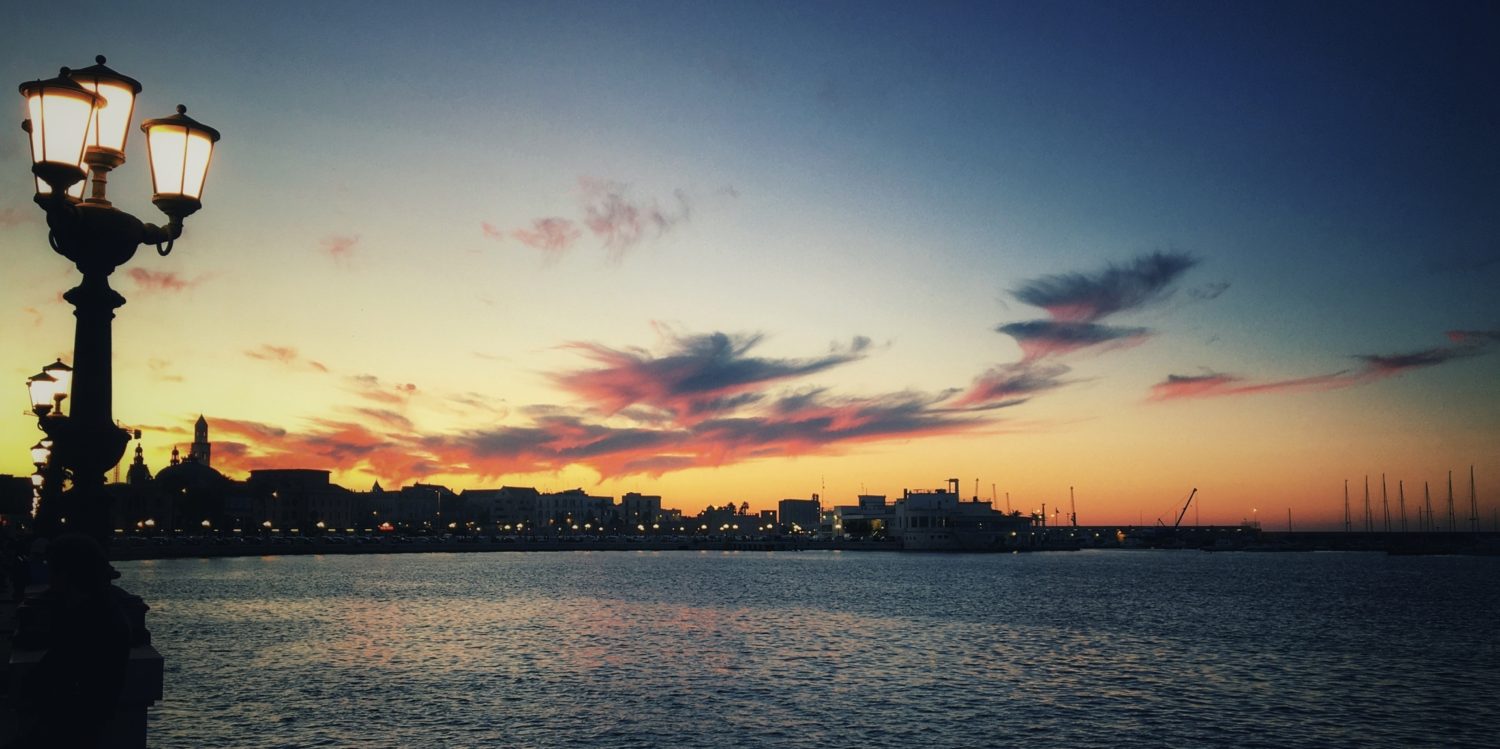Saint Nicholas or San Nicola reigns supreme in Bari. He’s everywhere. Countless buildings in the city are named in his honour (for example, the Stadio San Nicola, home of SSC Bari) and it’s not uncommon to see ornate pictures and murals of him adorning houses, bars, cafes and restaurants in the city. This is all down to his relics essentially being stolen from a tomb in a church in the ancient Greek town of Myria by Italian sailors following the Battle of Manzikert in 1071. The sailors brought the relics back to Bari and two years later, the Basilica di San Nicola was inaugurated by Pope Urban II to house Saint Nicholas’ remains. It is said that the Pope personally placed the bones into the tomb underneath the church’s altar himself.

Also, known as Nicholas of Bari and Nicholas The Wonderworker, he lived during the age of the Roman Empire and was a Christian bishop of Greek descent who spent most of his life living in the ancient town of Myra on the Anatolia peninsula, now part of Turkey. He gave all of the inheritance he received from his late parents to charity and was renowned for his spontaneous and secretive gift-giving and later became the inspiration for Santa Claus / Father Christmas.
Although many of the events in Saint Nicholas’ life are historically disputed, he seemed like a pretty sound bloke. He brought three young children back to life after they were killed by a maniacal butcher, with the intention of turning them into ham. He saved three poor sisters from a life of prostitution after dropping gold coins to them through the windows of their home. He appeared as a visitation in front of an executioner, threw his sword to the ground and saved three innocent men from their deaths after they had been condemned by the governor Eustathius. How a Greek-born philanthropist from 270 AD who spent much of his life living in Turkey morphed into an obese, white-haired, problem-drinking old man known as Santa Claus is unclear but it may have had something to do with the Dutch tradition of celebrating Sinterklaas.
It’s safe to say that Christmas in Bari, given its association with Saint Nicholas is usually a pretty big deal. Some of my students and Italian friends have told me about big street parties that take place on the 24th and 25th December and it sounds that in pre-Covid times, Christmas week is one big celebration of feasts, dotted with various religious ceremonies. It is said that Saint Nicholas’ relics continue to produce the miraculous liquid manna to this day. On his saint’s feast day on 6th December, a flask is used to collect the liquid from his sarcophagus and some is even available to purchase in shops near to the basilica.




Clockwise from left; Christmas lights on Via Sparano, Bari. Bari Lungomare. Basilica di San Nicola on 6th December. Festive panettone.
Another Italian festive legend is that of Befana, a hideous, yet kindly witch who visits children on Epiphany Eve (5th January) and depending on their behaviour over the previous year, gifts them with either presents of candy or lumps of coal. It is reported that Befana is also a fastidious housekeeper and that she will sweep the floor of the house upon leaving, brushing away the problems of the previous year. Whilst Father Christmas’ existence is widely-debated, I have seen several possible contenders in Bari for Befana.
I was lucky enough to be able to make it back to the UK for Christmas this year, narrowly avoiding the flare-up resulting from the new super-contagious strain of Covid being identified in London and the South-East in mid-December. I may have gone a little overboard in packing as much cured meat, cheese, spreads, pistachio nuts and panettone for family into my check-in luggage as possible. My excuse is that I was following the bountiful example set by Saint Nicholas. Detox and intermittent fasting begins in January.

I have made an alternative Christmas Spotify playlist for the festive season featuring the likes of James Brown, Calexico and LCD Soundsystem. Check it out here – enjoy!

